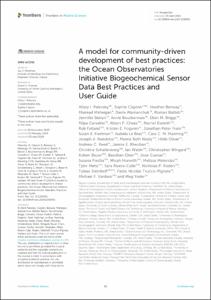| dc.contributor.author | Palevsky, Hilary | |
| dc.contributor.author | Clayton, Sophie | |
| dc.contributor.author | Benway, Heather | |
| dc.contributor.author | Maheigan, Mairead | |
| dc.contributor.author | Atamanchuk, Dariia | |
| dc.contributor.author | Battisti, Roman | |
| dc.contributor.author | Batryn, Jennifer | |
| dc.contributor.author | Bourbonnais, Annie | |
| dc.contributor.author | Briggs, Ellen M. | |
| dc.contributor.author | Carvalho, Filipo | |
| dc.contributor.author | Chase, Alison P. | |
| dc.contributor.author | Eveleth, Rachel | |
| dc.contributor.author | Fatland, Rob | |
| dc.contributor.author | Fogaren, Kristen | |
| dc.contributor.author | Fram, Jonathan | |
| dc.contributor.author | Hartman, Susan E. | |
| dc.contributor.author | Le Bras, Isabela | |
| dc.contributor.author | Manning, Cara | |
| dc.contributor.author | Needoba, Joseph A. | |
| dc.contributor.author | Neely, Merrie Beth | |
| dc.contributor.author | Oliver , Hilde | |
| dc.contributor.author | Reed, Andrew C. | |
| dc.contributor.author | Rheuban, Jennie E. | |
| dc.contributor.author | Schallenberg, Christina | |
| dc.contributor.author | Walsh, Ian | |
| dc.contributor.author | Wingard, Christopher | |
| dc.contributor.author | Bauer, Kohen Witt | |
| dc.contributor.author | Chen, Baoshan | |
| dc.contributor.author | Cuevas, Jose | |
| dc.contributor.author | Flecha, Susana | |
| dc.contributor.author | Horwith, Micah | |
| dc.contributor.author | Melendez, Melissa | |
| dc.contributor.author | Menz, Tyler | |
| dc.contributor.author | Rivero-Calle, Sara | |
| dc.contributor.author | Roden, Nicholas | |
| dc.contributor.author | Steinhoff, Tobias | |
| dc.contributor.author | Trucco Pignata, Pablo Nicolás | |
| dc.contributor.author | Vardaro, Michael | |
| dc.contributor.author | Yoder, Meg | |
| dc.date.accessioned | 2024-04-10T21:31:48Z | |
| dc.date.available | 2024-04-10T21:31:48Z | |
| dc.date.issued | 2024 | |
| dc.identifier.citation | Palevsky, H.I.,Clayton, S., Benway, H., Maheigan, M,. Atamanchuk, D., et al (2024) A model for community-driven development of best practices: the Ocean Observatories Initiative Biogeochemical Sensor Data Best Practices and User Guide.
Frontiers in Marine Science, 11:1358591, 9pp. DOI: https://doi.org/10.3389/fmars.2024.1358591 | en_US |
| dc.identifier.uri | https://repository.oceanbestpractices.org/handle/11329/2443 | |
| dc.description.abstract | The field of oceanography is transitioning from data-poor to data-rich, thanks in
part to increased deployment of in-situ platforms and sensors, such as those that
instrument the US-funded Ocean Observatories Initiative (OOI). However,
generating science-ready data products from these sensors, particularly those
making biogeochemical measurements, often requires extensive end-user
calibration and validation procedures, which can present a significant barrier.
Openly available community-developed and -vetted Best Practices contribute to
overcoming such barriers, but collaboratively developing user-friendly Best
Practices can be challenging. Here we describe the process undertaken by the
NSF-funded OOI Biogeochemical Sensor Data Working Group to develop Best
Practices for creating science-ready biogeochemical data products from OOI
data, culminating in the publication of the GOOS-endorsed OOI Biogeochemical
Sensor Data Best Practices and User Guide. For Best Practices related to ocean
observatories, engaging observatory staff is crucial, but having a “user-defined”
process ensures the final product addresses user needs. Our process prioritized
bringing together a diverse team and creating an inclusive environment where all
participants could effectively contribute. Incorporating the perspectives of a wide
range of experts and prospective end users through an iterative review process
that included “Beta Testers’’ enabled us to produce a final product that combines
technical information with a user-friendly structure that illustrates data analysis
pipelines via flowcharts and worked examples accompanied by pseudo-code.
Our process and its impact on improving the accessibility and utility of the end
product provides a roadmap for other groups undertaking similar community driven
activities to develop and disseminate new Ocean Best Practices. | en_US |
| dc.language.iso | en | en_US |
| dc.rights | Attribution 4.0 International | * |
| dc.rights.uri | http://creativecommons.org/licenses/by/4.0/ | * |
| dc.subject.other | Ocean best practices, | |
| dc.subject.other | Biogeochemical sensors, | |
| dc.subject.other | Ocean Observatories Initiative (OOI) | |
| dc.subject.other | Beta testers | |
| dc.title | A model for community-driven development of best practices: the Ocean Observatories Initiative Biogeochemical Sensor Data Best Practices and User Guide. | en_US |
| dc.type | Journal Contribution | en_US |
| dc.description.refereed | Refereed | en_US |
| dc.format.pagerange | 9pp. | en_US |
| dc.identifier.doi | https://doi.org/10.3389/fmars.2024.1358591 | |
| dc.subject.parameterDiscipline | Carbonate system | en_US |
| dc.subject.parameterDiscipline | Nutrients | en_US |
| dc.subject.parameterDiscipline | Dissolved gases | en_US |
| dc.subject.dmProcesses | Data processing | en_US |
| dc.bibliographicCitation.title | Frontiers in Marine Science | en_US |
| dc.bibliographicCitation.volume | 11 | en_US |
| dc.bibliographicCitation.issue | Article 1358591 | en_US |
| dc.description.sdg | 14.a | en_US |
| dc.description.eov | Oxygen | en_US |
| dc.description.eov | Nutrients | en_US |
| dc.description.eov | Inorganic carbon | en_US |
| dc.description.eov | Particulate matter | en_US |
| dc.description.eov | Ocean colour | en_US |
| dc.description.maturitylevel | Mature | en_US |
| dc.description.frontiers | 2024-04-03 | |
| dc.description.adoption | Validated (tested by third parties) | en_US |
| dc.description.adoption | Multi-organisational | en_US |
| dc.description.methodologyType | Method | en_US |
| dc.description.methodologyType | Specification of criteria | en_US |
| obps.contact.contactname | Hilary I. Palevsky | |
| obps.contact.contactemail | palevsky@bc.edu | |
| obps.resourceurl.publisher | https://www.frontiersin.org/articles/10.3389/fmars.2024.1358591/full | |
 Repository of community practices in Ocean Research, Applications and Data/Information Management
Repository of community practices in Ocean Research, Applications and Data/Information Management


